Amazing Iris Companion Plants That Will Make Your Garden Bloom
Irises are a beautiful and versatile flower that can add a touch of elegance to any garden. But did you know that they can also benefit from having companion plants? Companion planting is a gardening technique that involves planting different types of plants together in order to create a more balanced and productive ecosystem. When choosing companion plants for irises, there are a few things you'll want to keep in mind.
First, consider the size and growth habit of the iris. Some irises, such as bearded irises, can grow quite tall. You'll want to choose companion plants that will not be overshadowed by the irises. Conversely, if you have dwarf irises, you may want to choose taller companion plants to add some height to your garden.
Second, think about the bloom time of the iris. Irises typically bloom in the spring, but there are some varieties that bloom in the summer or fall. When choosing companion plants, you'll want to select those that will bloom at the same time as the irises or that will bloom before or after the irises to extend the flowering season in your garden.
Finally, consider the needs of the iris in terms of sunlight, water, and soil. Irises prefer full sun and well-drained soil. You'll want to choose companion plants that have similar needs.
Here are some of the best companion plants for irises:
- Daylilies: Daylilies are another tall-growing perennial that blooms in the summer. They come in a wide range of colors and can add a splash of color to your garden after the irises have finished blooming.
- Coral bells: Coral bells are a low-growing perennial that blooms in the spring and summer. They come in a variety of colors, including red, pink, and purple. Coral bells are drought-tolerant and can help to fill in the spaces around your irises.
- Salvia: Salvia is a tall-growing perennial that blooms in the summer. It comes in a variety of colors, including blue, purple, and white. Salvia attracts butterflies and other pollinators to your garden.
- Lavender: Lavender is a low-growing perennial that blooms in the summer. It has a strong fragrance that can help to deter pests from your garden. Lavender is also drought-tolerant and can help to fill in the spaces around your irises.

- Yarrow: Yarrow is a low-growing perennial that blooms in the summer. It comes in a variety of colors, including white, yellow, and pink. Yarrow is drought-tolerant and can help to attract beneficial insects to your garden.

- Phlox: Phlox is a tall-growing perennial that blooms in the summer. It comes in a variety of colors, including pink, purple, and white. Phlox is a good choice for attracting butterflies and other pollinators to your garden.
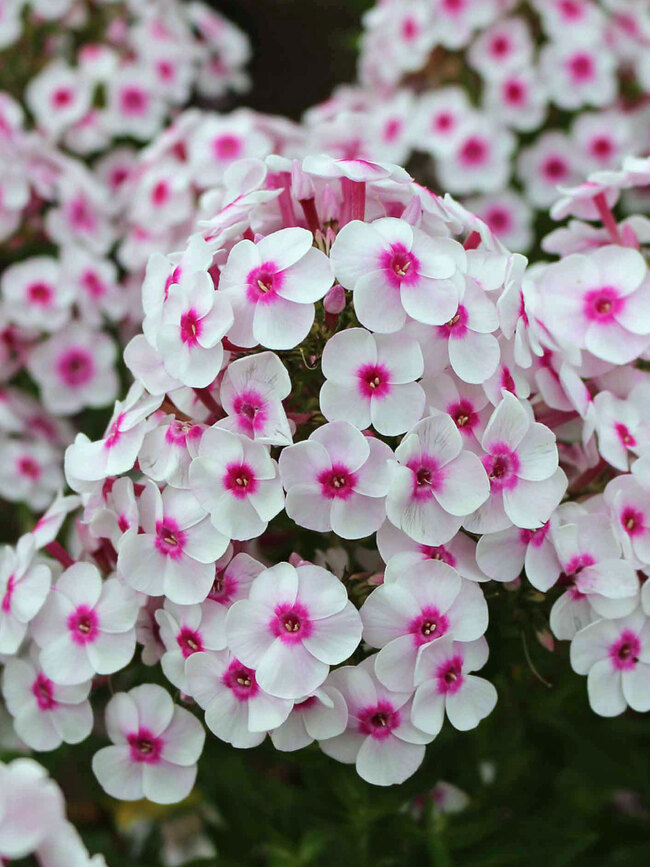
- Oriental poppies: Oriental poppies are a short-lived perennial that blooms in the spring. They come in a variety of colors, including red, orange, and yellow. Oriental poppies are a good choice for adding a splash of color to your garden in the spring.
- Tulips: Tulips are a spring-blooming bulb that comes in a wide range of colors. They are a good choice for adding early color to your garden.
- Daffodils: Daffodils are a spring-blooming bulb that comes in a variety of colors. They are a good choice for adding early color to your garden.
These are just a few of the many companion plants that you can choose from. When selecting companion plants for irises, it is important to consider the size, growth habit, bloom time, and needs of the iris. By choosing the right companion plants, you can create a beautiful and balanced garden that will thrive for years to come.
Irises are beautiful flowers that can add a touch of elegance to any garden. But did you know that choosing the right companion plants can help your irises thrive?
The right companion plants can help to:
- Attract pollinators. Irises are a favorite food of bees and butterflies, so planting companion plants that also attract these pollinators can help to improve the pollination of your irises.
- Provide structure and height. Irises come in a variety of heights, so you can choose companion plants that will add structure and height to your garden. For example, you could plant tall irises with shorter companion plants like daylilies or columbines.
- Fill in gaps. When irises finish flowering, they can leave gaps in your garden. Planting companion plants that will bloom at the same time or later can help to fill in these gaps and keep your garden looking full all season long.
If you're looking for more information about iris companion plants, I recommend visiting Garden Wiki. This website has a comprehensive list of companion plants for irises, as well as tips on how to choose the right plants for your garden.
FAQ of iris companion plants
Question 1: What are some good companion plants for iris?
Answer: Iris plants can be grown with a variety of other plants, but some of the best companion plants include:
- Daylilies: Daylilies and irises have similar growing requirements and bloom at the same time, so they make a great combination.
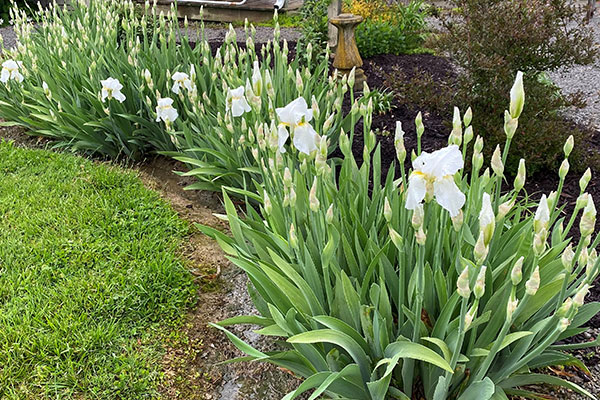
- Peonies: Peonies and irises also bloom at the same time and have similar light and soil requirements.
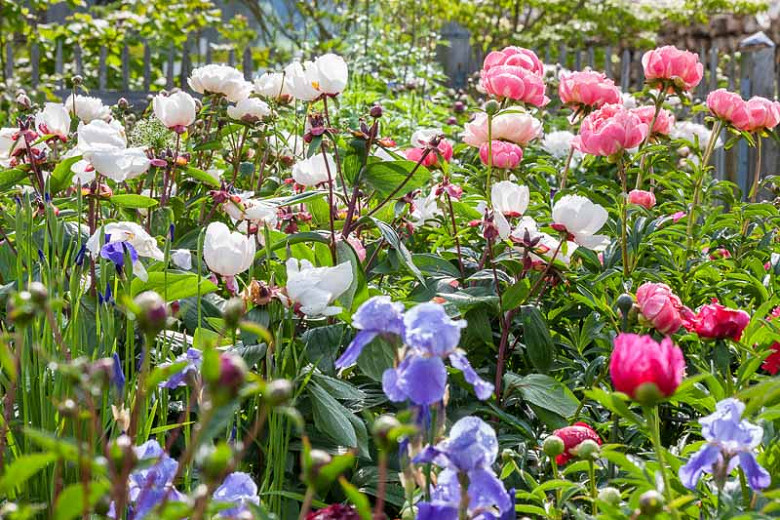
- Hostas: Hostas provide shade and moisture for irises, which can help to prevent them from drying out.

- Lavender: Lavender is a drought-tolerant plant that can help to deter pests from irises.
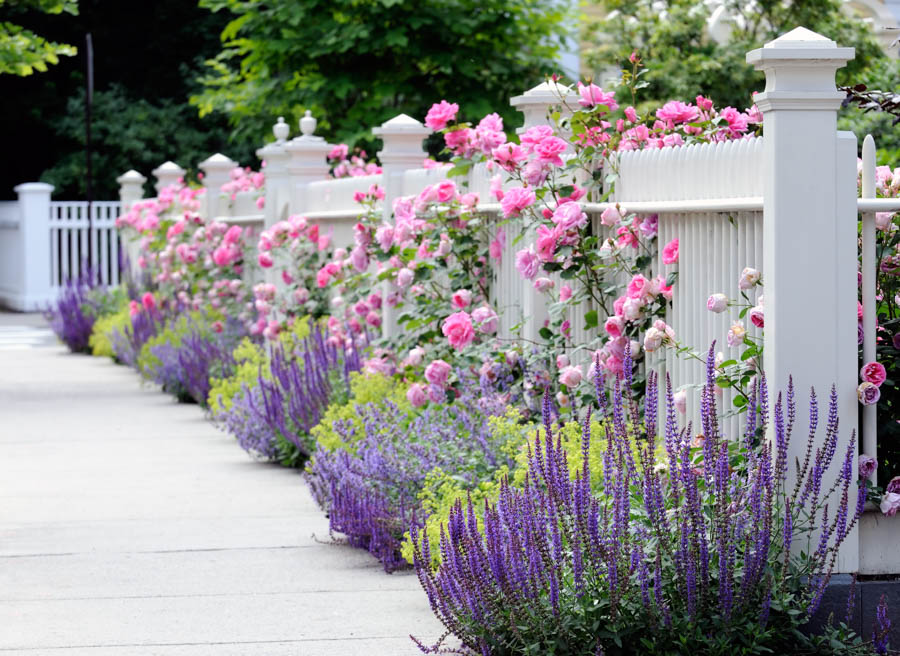
- Yarrow: Yarrow is another drought-tolerant plant that can help to deter pests from irises.

Question 2: How do I choose companion plants for my iris?
Answer: When choosing companion plants for your iris, it is important to consider the following factors:
- Sunlight: Iris plants need full sun to partial shade. Make sure to choose companion plants that have similar sunlight requirements.
- Soil type: Iris plants prefer well-drained soil. Avoid planting them in heavy clay soil or in areas that are prone to flooding.
- Bloom time: If you want your iris to bloom for a long period of time, choose companion plants that bloom at different times of the year.
- Pests and diseases: Some companion plants can help to deter pests and diseases from irises. For example, lavender and yarrow are both known to repel pests.
- Visual appeal: Of course, you also want to choose companion plants that you think look good together. Consider the size, shape, and color of the plants when making your decision.
Question 3: How far apart should I plant iris and its companion plants?
Answer: The spacing requirements for iris and its companion plants will vary depending on the specific plants involved. However, as a general rule of thumb, you should space iris plants about 18 inches apart and companion plants about 12 inches apart.
Question 4: When should I plant iris and its companion plants?
Answer: Iris plants can be planted in the spring or fall. However, it is important to plant them when the soil is moist and workable.
Question 5: How do I care for iris and its companion plants?
Answer: Iris plants and their companion plants are relatively low-maintenance. However, they will need to be watered regularly, especially during hot, dry weather. You may also need to fertilize them once or twice a year.
Image of iris companion plants
- Columbine: This plant has beautiful, delicate flowers that bloom in early spring. It is a good companion plant for iris because it has similar growing requirements and can help to fill in the gaps between iris plants.
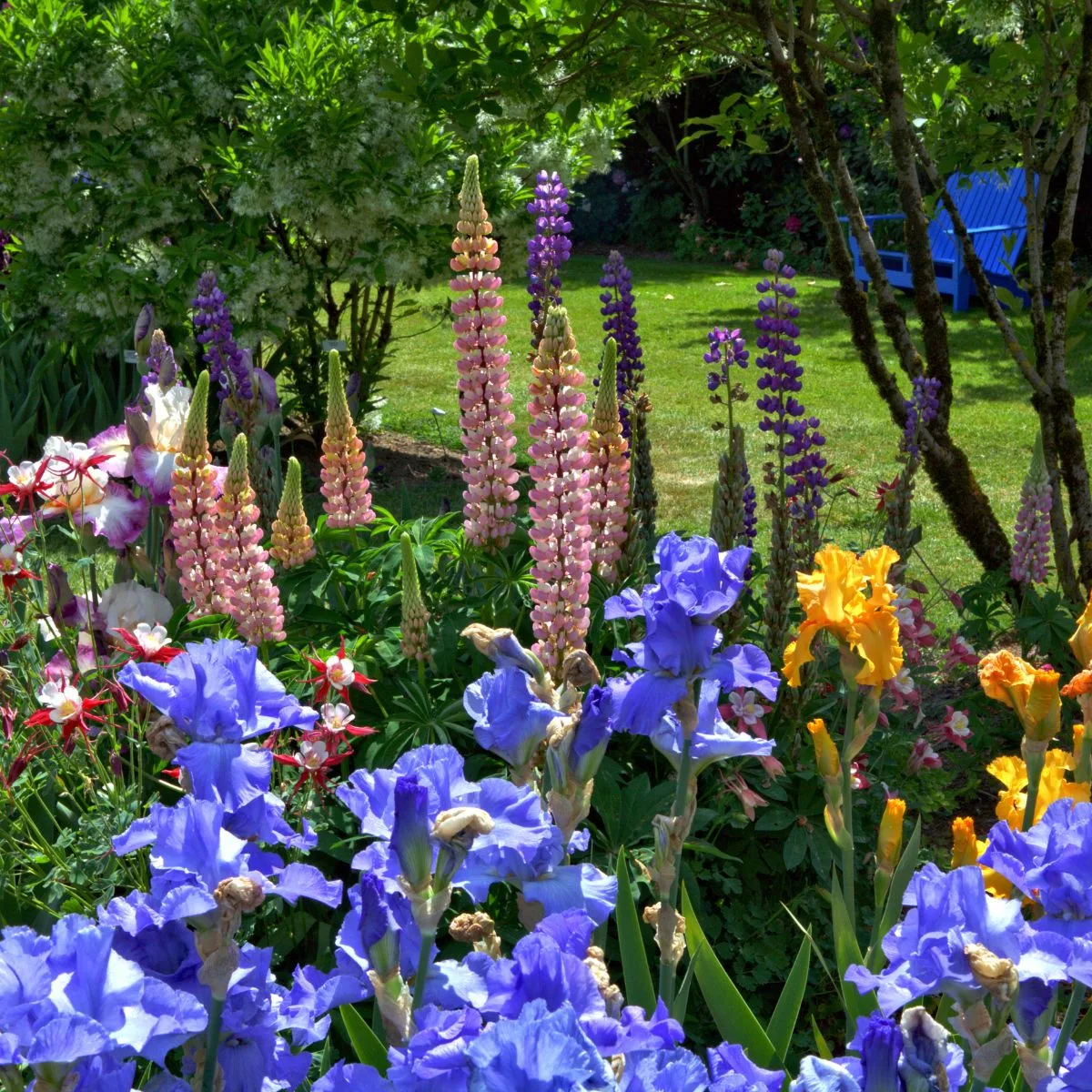
- Salvia: This plant has bright, colorful flowers that bloom in summer. It is a good companion plant for iris because it can help to attract pollinators to the garden.

- Peonies: These plants have large, showy flowers that bloom in spring. They are a good companion plant for iris because they can help to add height and structure to the garden.

- Lupines: These plants have tall, spikes of flowers that bloom in spring. They are a good companion plant for iris because they can help to fill in the gaps between iris plants and add height to the garden.

- Alliums: These plants have globe-shaped flowers that bloom in spring. They are a good companion plant for iris because they can help to add height and interest to the garden.

Post a Comment for " Amazing Iris Companion Plants That Will Make Your Garden Bloom"